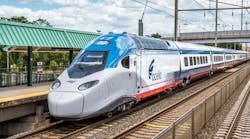OP-ED: New York Penn Station East River tunnel repairs update
On Sept. 8,1908, there was a celebration for the first day of direct Long Island Rail Road (LIRR) service to New York Penn Station through the East River tunnels. This was a great day for transportation history. Prior to this, LIRR riders had to transfer to ferries from Long Island City to access Manhattan. This year, Sept. 8, represented the 114th Anniversary of direct LIRR service from Queens, Nassau or Suffolk County to Manhattan.
Amtrak and New Jersey Transit also benefit by these tunnels. They use these tunnels for access to the Queens Sunnyside Yards. This facility is used for mid day and overnight storage to position equipment for rush hour service. Bringing the East River tunnels up to a state of good repair is equally important as doing the same with both Hudson River Tunnels to New Jersey. Two of the four East River tunnels suffered significant damage as a result of Super Storm Sandy in 2012.
Ongoing cancellation and combining of trains due to signal and other problems in the East River tunnels, along with other locations on all nine branches of the LIRR system will continue for years to come. Amtrak will not initiate decades overdue major repairs of the East River tunnels until some time in 2024 (two years after East Side Access to Grand Central Madison begins).
U.S. Sen. Charles Schumer (D-NY) said in June 2016 that the Federal Transit Administration provided $432 million in Super Storm Sandy funding to the MTA for repairs to the East River Tunnel. Six years later, there is little evidence that these funds have been spent for their original intended purpose.
The MTA and LIRR have yet to complete negotiations with Amtrak for both initiation, scope and duration of this critical work. LIRR riders will not see the full benefits for the MTA investing $2.5 billion into the $300 million West End Concourse, $600 million upgraded Main Concourse and new entrance at 33rd Street and 7th Avenue along with the Empire State Development agency $1.6 billion Amtrak Moynihan Train Hall without safe and reliable service. LIRR operations will continue to suffer from periodic delays, cancellation and combining of trains due to problems in the East River tunnels until they are fully restored to a state of good repair.
This work on all four East River tunnels, including two that suffered significant damages from 2012 Super Storm Sandy may not be completed until 2029. Amtrak has gone on record that these two tunnels will require 18 months each for completion. It will require one of two tunnels damaged by Super Storm Sandy being out of service at a time to support this work. The other two tunnels will also need work to bring them up to a state of good repair. With only three of four tunnels available, there will be a reduction in Penn Station access and capacity. Currently. Amtrak forecasts this work to be completed on the two most seriously damaged tunnels by Super Storm Sandy in 2027. It is reasonable to assume that two more years will be needed for completion of work on the other two tunnels. The total project cost has grown over time from $400 million to $1.6 billion today. Amtrak has yet to secure $1.2 billion in additional federal funding necessary to finance the total project cost..
To preserve existing service, many LIRR rush hour trains will be canceled or combined. This results in overcrowded trains with insufficient seating capacity. Some riders end up standing in the vestibules and aisles. Until this work is over, it will be impossible to guarantee safe and reliable on time service including a seat during AM and PM peak trips to and from Penn Station for LIRR commuters.
Reduced East River tunnel capacity also makes it difficult to add previously promised new services This includes Metro North East Bronx New Haven line Access to Penn Station via the Hell Gate Bridge and 40 percent overall increase in reverse peak service after opening of East Side Access to Grand Central Madison. Both Amtrak and New Jersey Transit need access to the Queens Sunnyside Yards via the East River tunnels to support their own respective planned service increases. Going from four to three available East River tunnels results in a significant capacity reduction. This translates to no increase in existing or new services until work on all four East River tunnels is completed.
---------------------------
Larry Penner is a transportation advocate, historian and writer who previously worked for the Federal Transit Administration Region 2 New York Office. This included the development, review, approval and oversight for billions in capital projects and programs for the MTA, NYC Transit, Long Island Rail Road, Metro North Rail Road MTA Bus, New Jersey Transit along with 30 other transit agencies in NY & NJ.

Larry Penner
Larry Penner is a transportation advocate, historian and writer who previously served as a former director for the Federal Transit Administration Region 2 New York Office of Operations and Program Management. This included the development, review, approval and oversight for billions in capital projects and programs for New Jersey Transit, New York Metropolitan Transportation Authority, NYC Transit bus, subway and Staten Island Railway, Long Island and Metro North railroads, MTA Bus, NYCDOT Staten Island Ferry along with 30 other transit agencies in New York and New Jersey.




